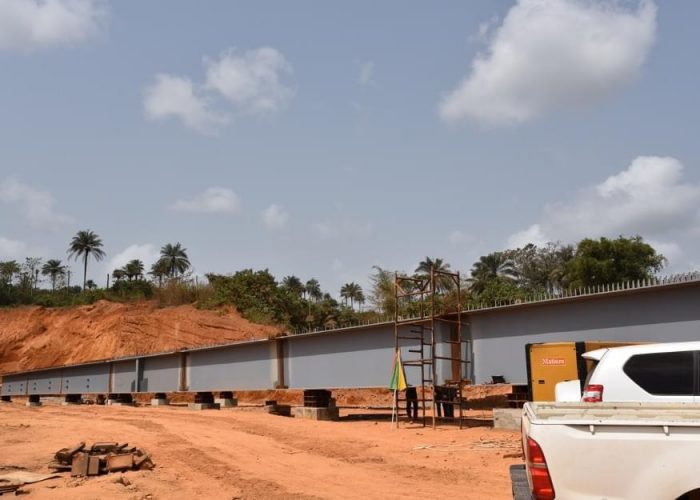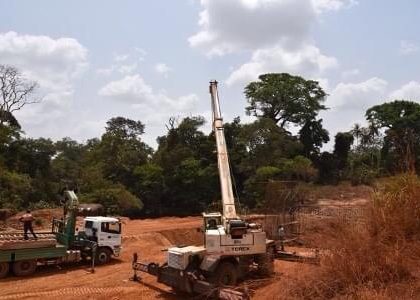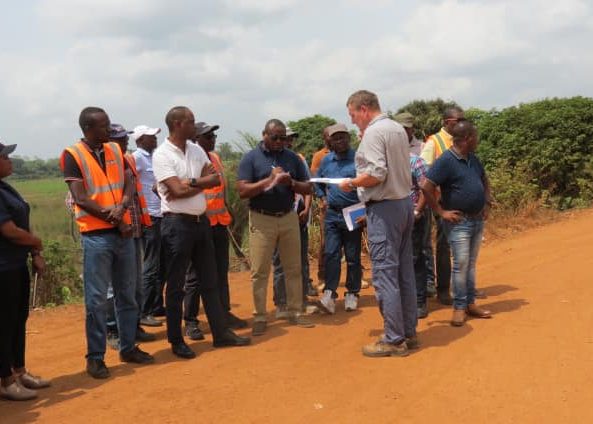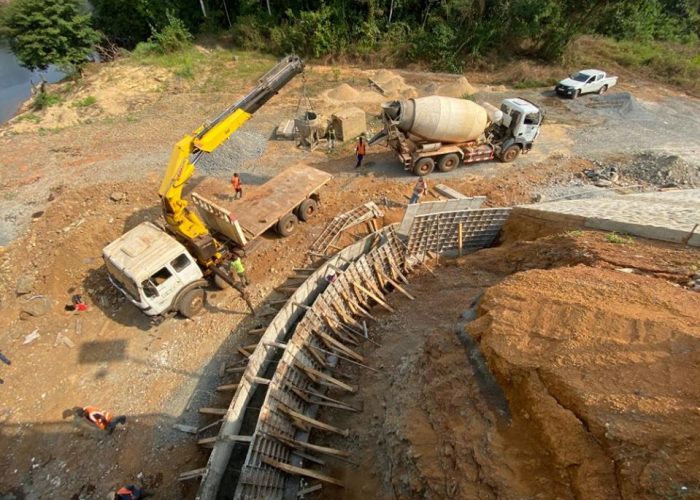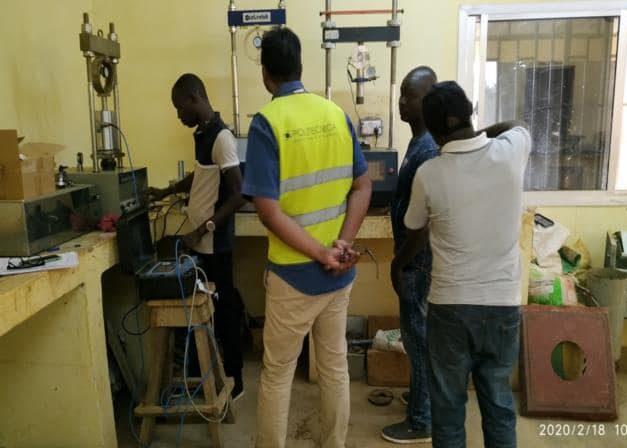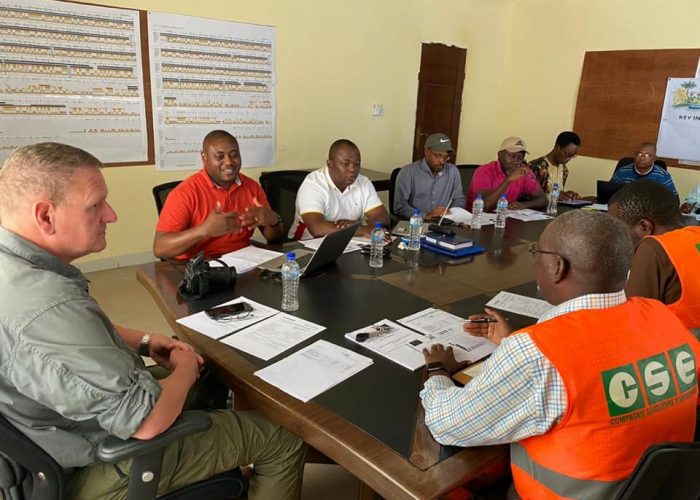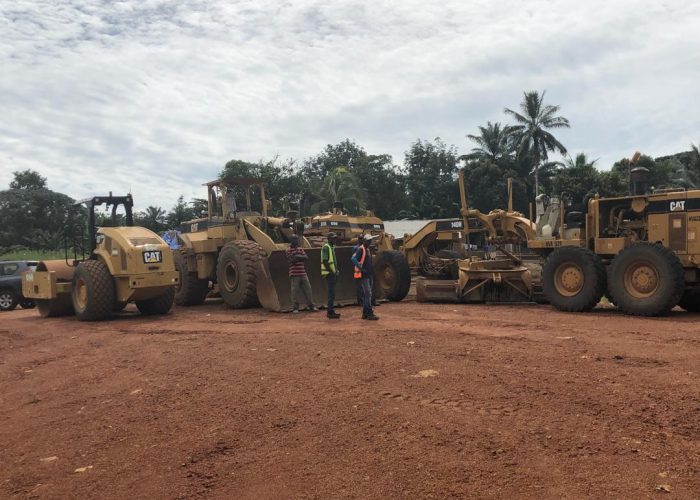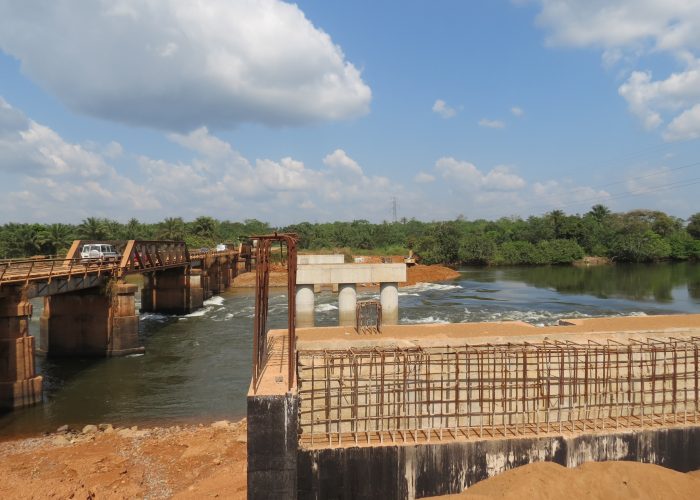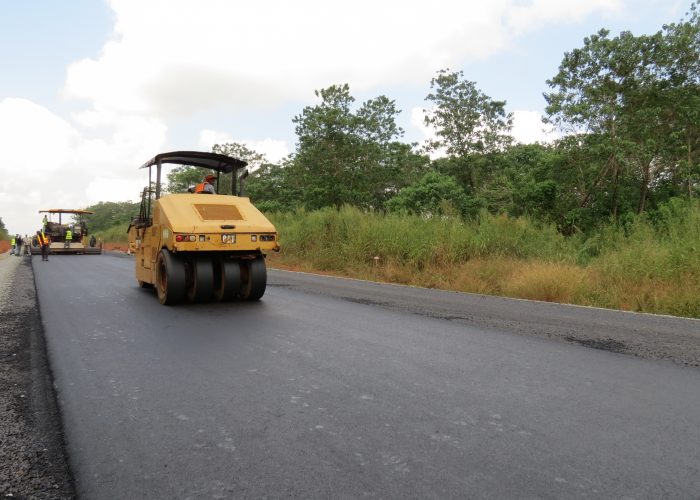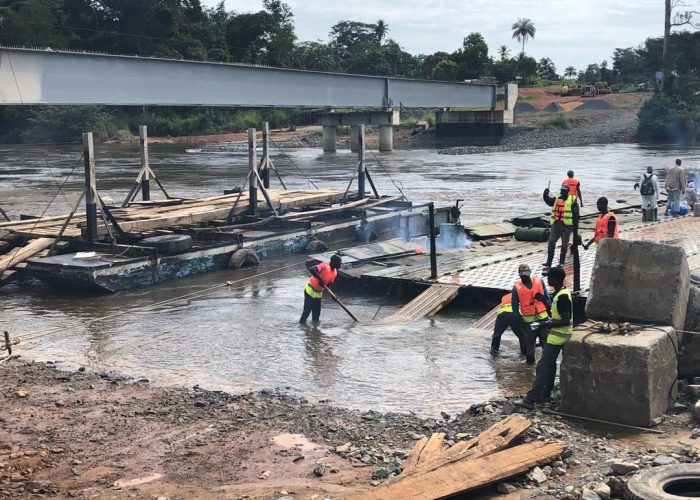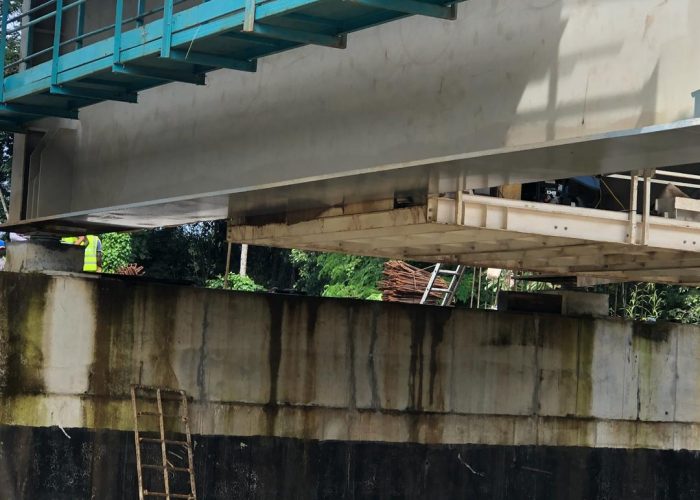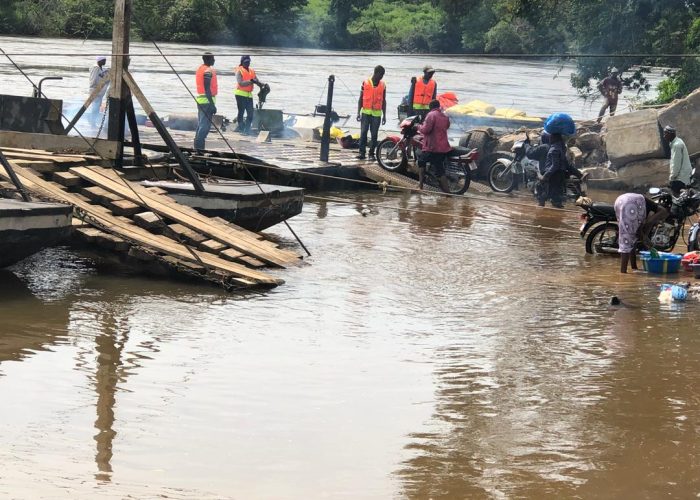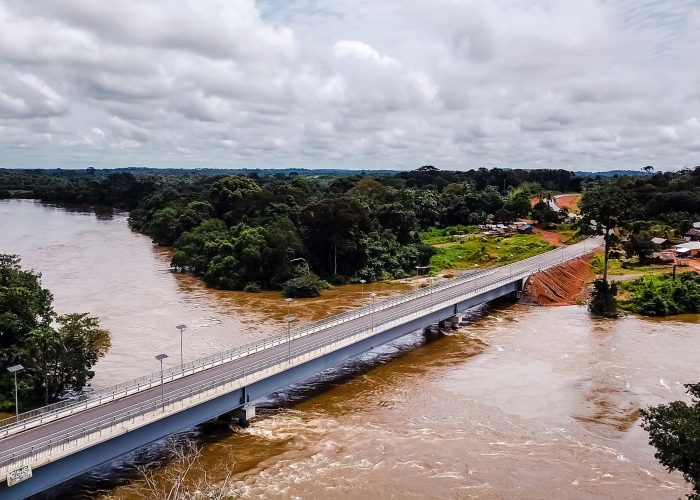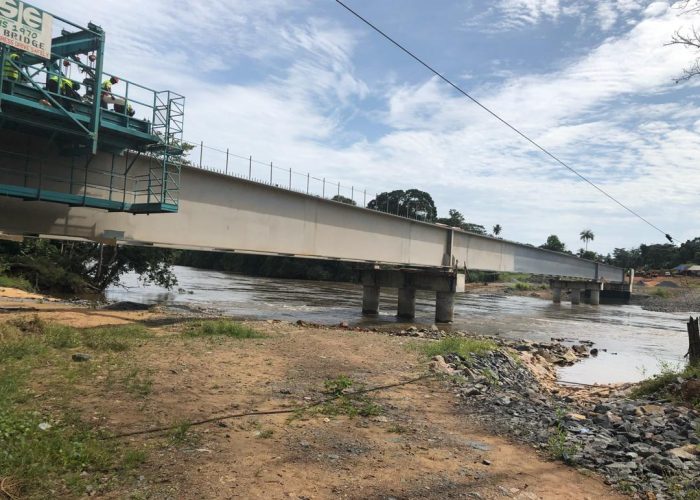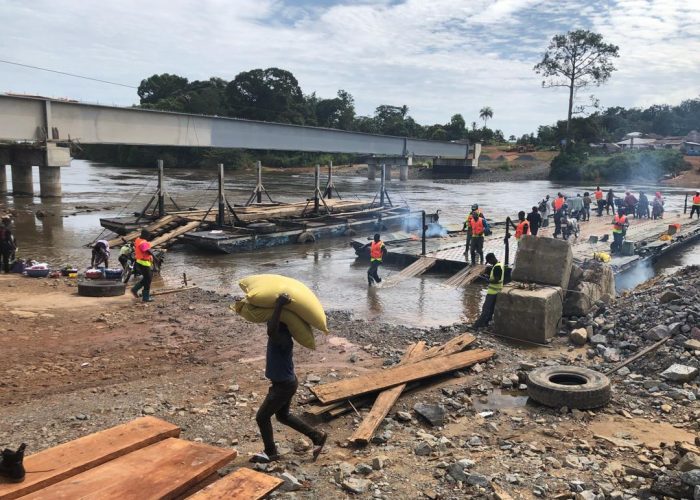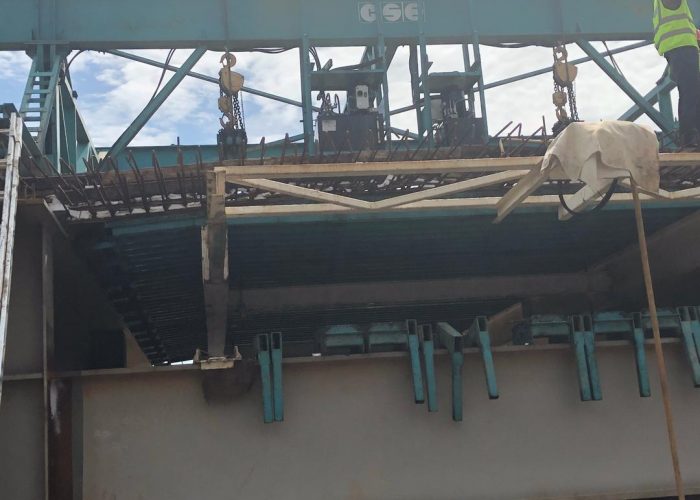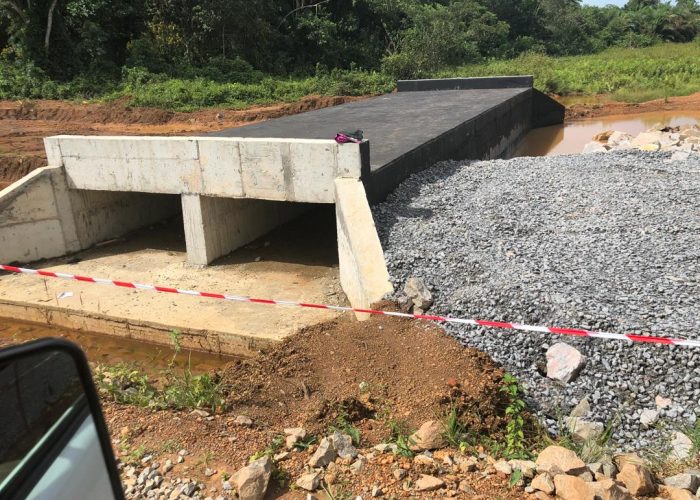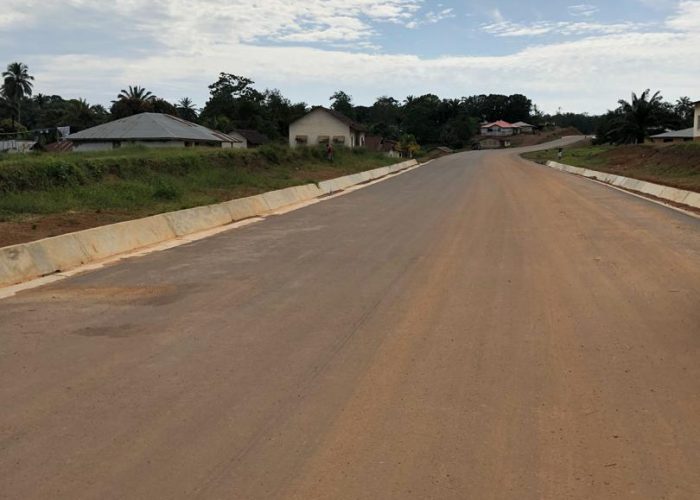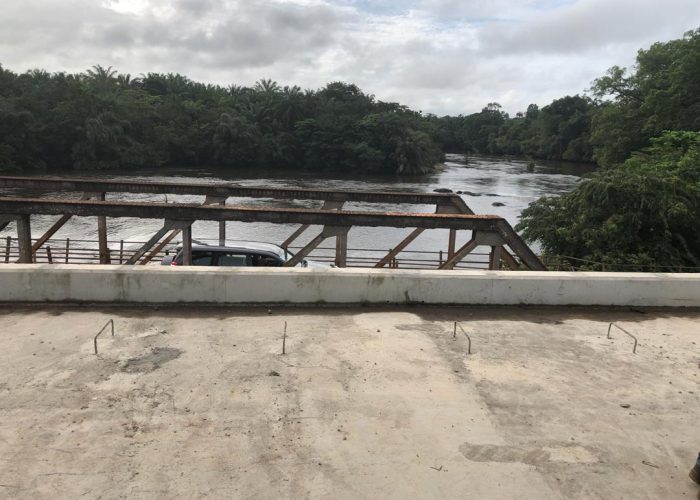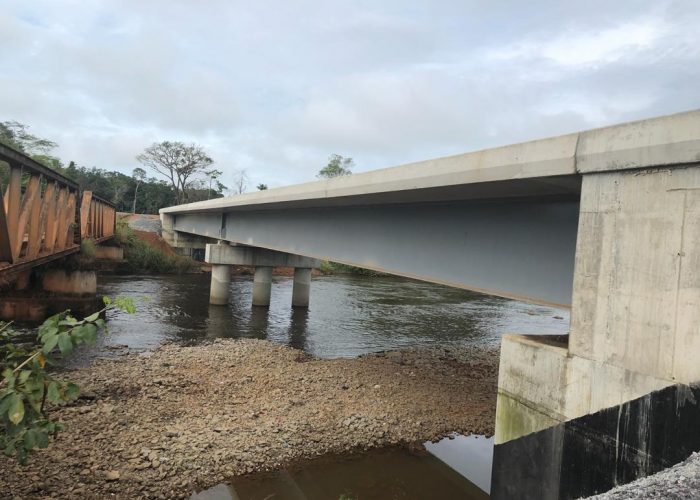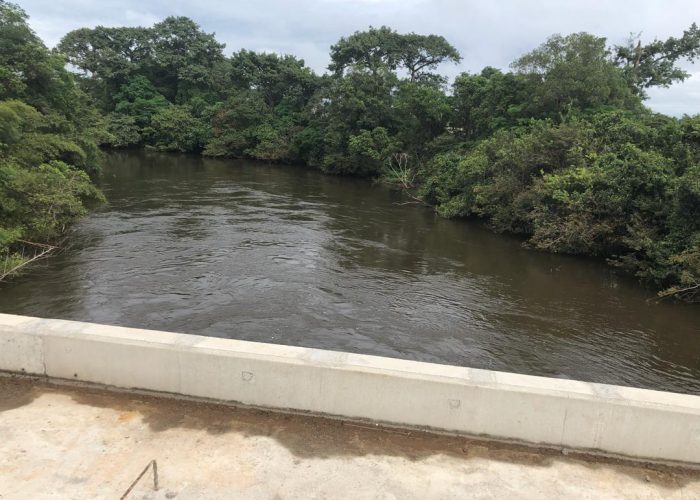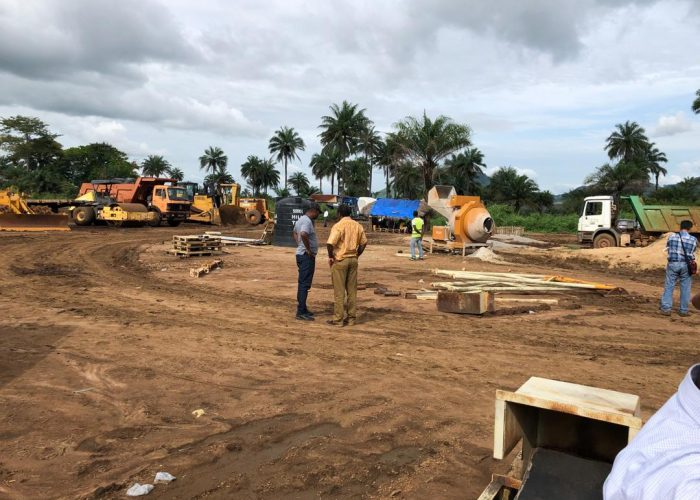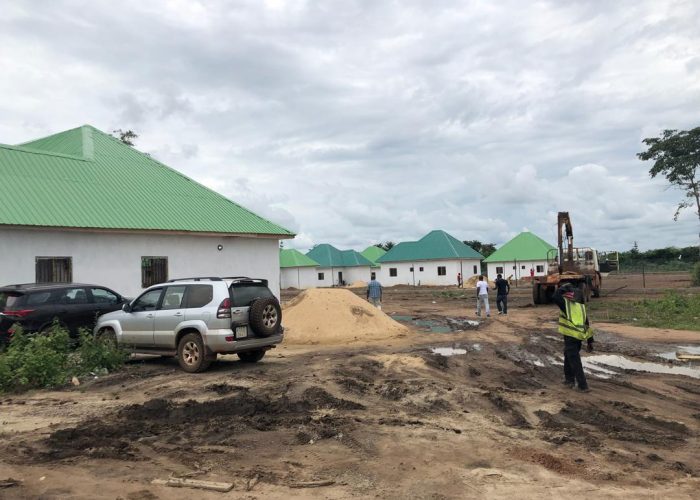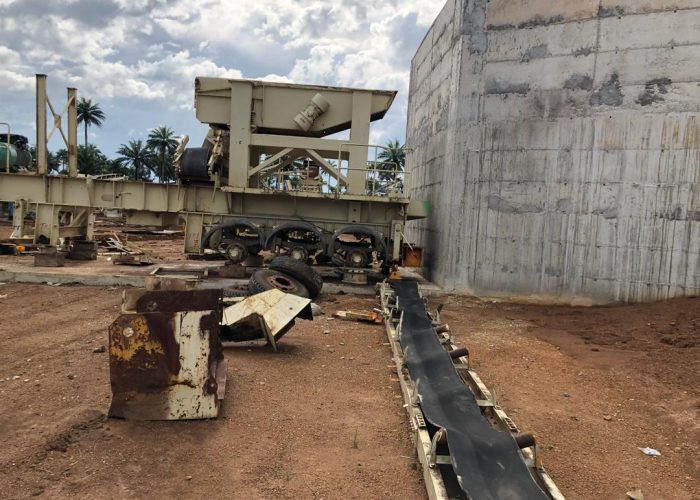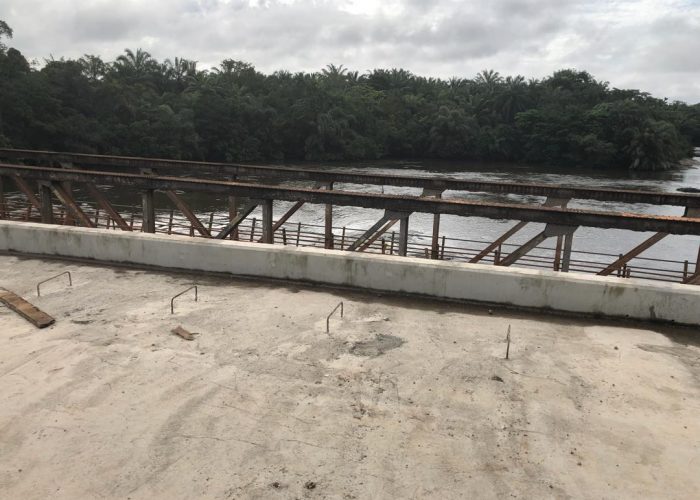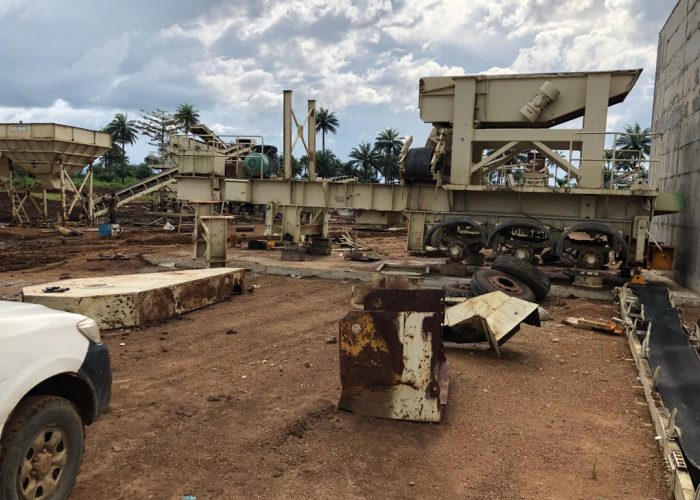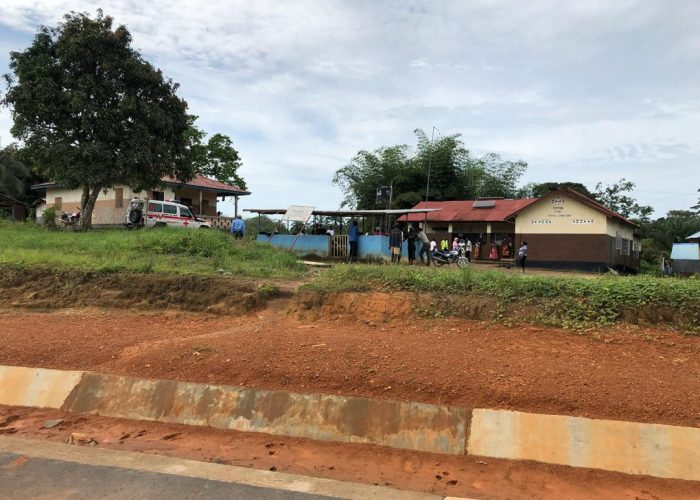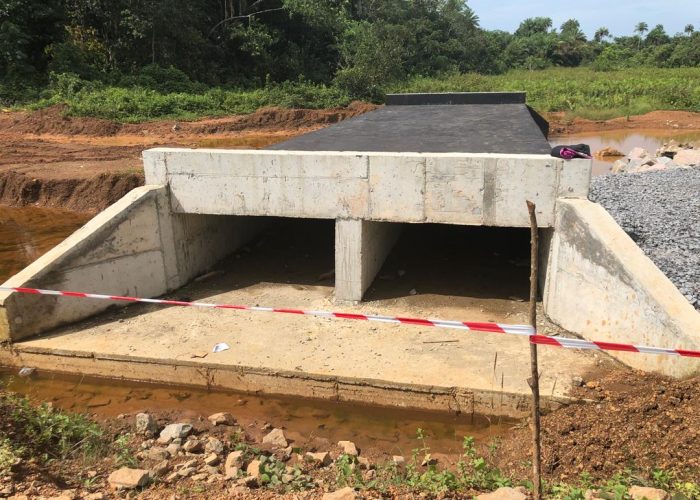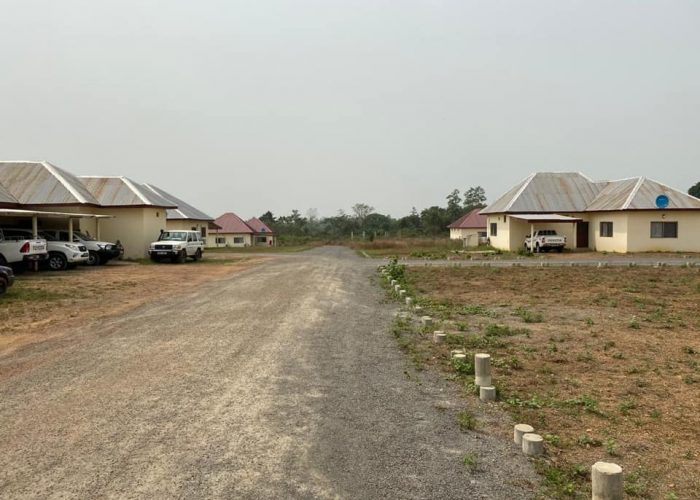Bandajuma-Liberia Road and Bridges Rehabilitation Project
The largest European Union (EU) funded project in Sierra Leone is the €105 million Bandajuma–Liberia Road and Bridges Rehabilitation Project. It provides for the upgrading of 100km of roads between Sierra Leone and Liberia, and the construction of three new bridges. These span the Sewa River, the Wanjie River and the Moa River. This project will improve Sierra Leone’s core road network and open the main gateway to Liberia, restoring a vital link between the countries.
Moyamba-Moyamba Junction Road and Bridges
The €40.7 million Moyamba-Moyamba Junction road project in the Southern province will improve the road communication system between Moyamba Town and the Masiaka-Bo Highway and facilitate access to the South-Eastern districts. It provides for the rehabilitation of 33km of road between Moyamba and Moyamba Junction, and four bridges. These include one over Gbangbama River, another over Yambatui River, and the construction of two-lane bridges over the Rokel River (Magbele Bridge) and the Ribi River (Mabang Bridge).
Positive Impacts:
Efficient road infrastructure is an important driver for the economic and social development of Sierra Leone and an essential factor for regional integration. Sierra Leone’s economy is highly dependent on the transport of people and commodities by road but the condition of the national network is poor and its extent limited. To rehabilitate the core road network and to enhance national and regional integration is, therefore, a priority. An upgraded road network in Sierra Leone will enhance living standards and reduce poverty by facilitating access to basic social services, improving trade and economic integration of the West African region and in particular between the North and South of Sierra Leone, reducing the cost of transport, travel time and vehicle operating costs and improving road safety. The increased economic activity generated by the projects should help reduce rural-urban migration, particularly among women with dependent children. Positive environmental impacts include: reduced dust along the road plan; reduced accident spills and contamination of ground water and soils; and improvements in drainage and water management.

